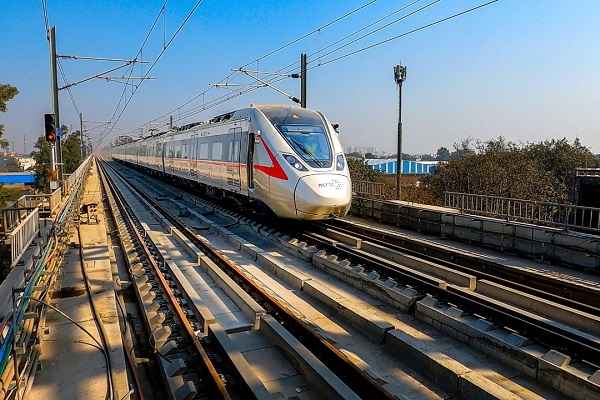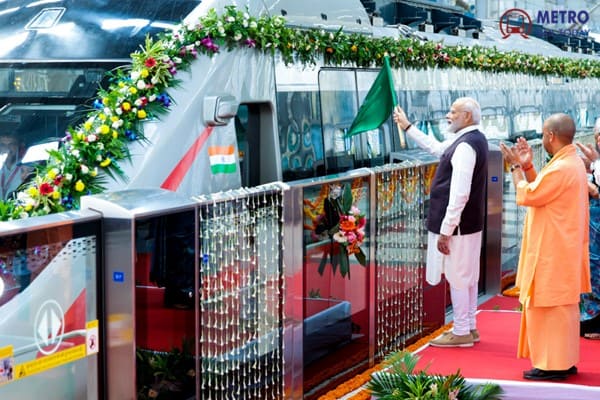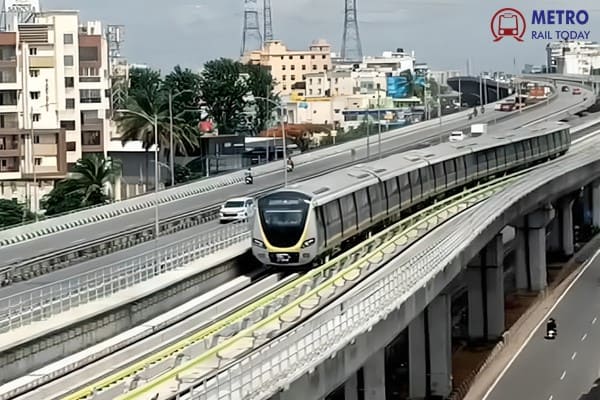 Hitachi Rail GTS India Wins ₹76 Crore AFC Contract for Bangalore Metro Phase 2A & 2B
Hitachi Rail GTS India Wins ₹76 Crore AFC Contract for Bangalore Metro Phase 2A & 2B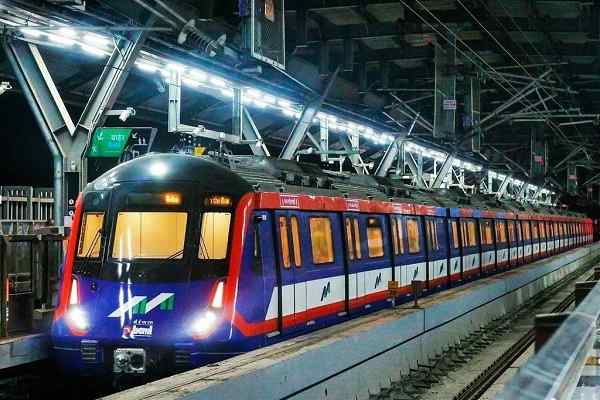 L&T Technology Services Bags ₹70 Crore AFC Contract for Mumbai Metro Line 7A & 9
L&T Technology Services Bags ₹70 Crore AFC Contract for Mumbai Metro Line 7A & 9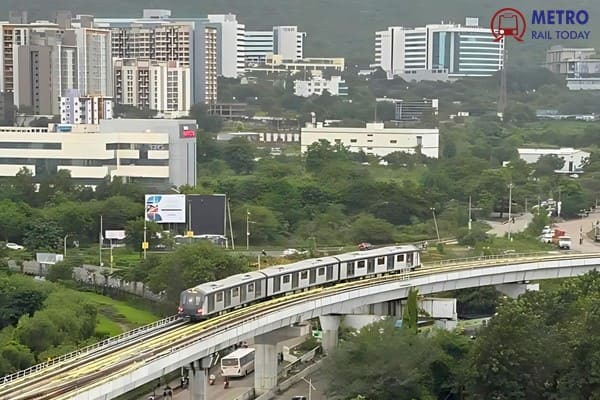 Larsen & Toubro Bags ₹4,788 Crore System Contract for Mumbai Metro Line 4 & 4A
Larsen & Toubro Bags ₹4,788 Crore System Contract for Mumbai Metro Line 4 & 4A Poland unveils 29-km new metro rail plan for Krakow with 10-years deadline
Poland unveils 29-km new metro rail plan for Krakow with 10-years deadline BEML seeks Expression of Interests from Global Leaders for Indigenous TBM Manufacturing in India
BEML seeks Expression of Interests from Global Leaders for Indigenous TBM Manufacturing in India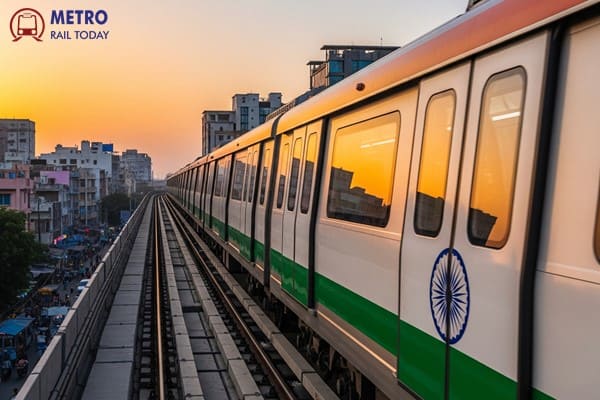 Lucknow Orbital Rail Corridor set to redefine Northern India's connectivity and Logistics Landscape
Lucknow Orbital Rail Corridor set to redefine Northern India's connectivity and Logistics Landscape Evelyn Palla appointed CEO of Deutsche Bahn AG, Becomes First Woman to lead the company
Evelyn Palla appointed CEO of Deutsche Bahn AG, Becomes First Woman to lead the company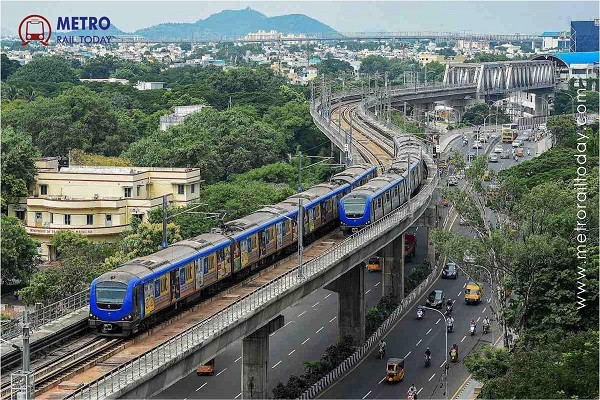 TN Govt and Indian Railways set to sign Chennai MRTS-Metro Integration MoU by December 2025
TN Govt and Indian Railways set to sign Chennai MRTS-Metro Integration MoU by December 2025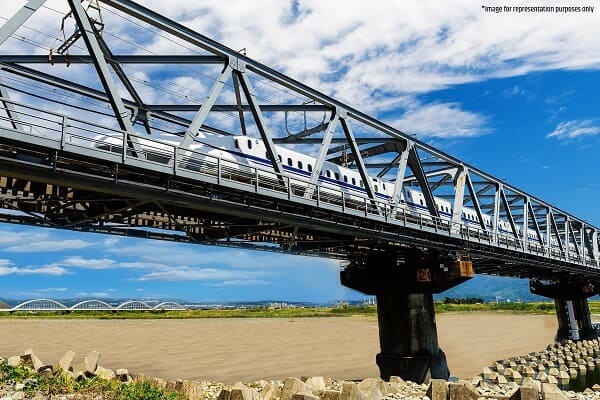 Saudi Arabia launches EOI for Qiddiya High-Speed Rail Project to link KSIA, KAFD and Qiddiya City
Saudi Arabia launches EOI for Qiddiya High-Speed Rail Project to link KSIA, KAFD and Qiddiya City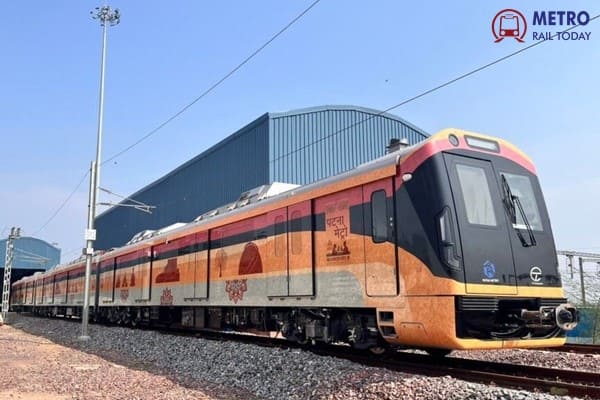 HCC bags ₹2,566 Crore Civil Contracts for Patna Metro's Underground Corridor
HCC bags ₹2,566 Crore Civil Contracts for Patna Metro's Underground Corridor
Use of precast technique will give shape to India’s first RRTS Corridor
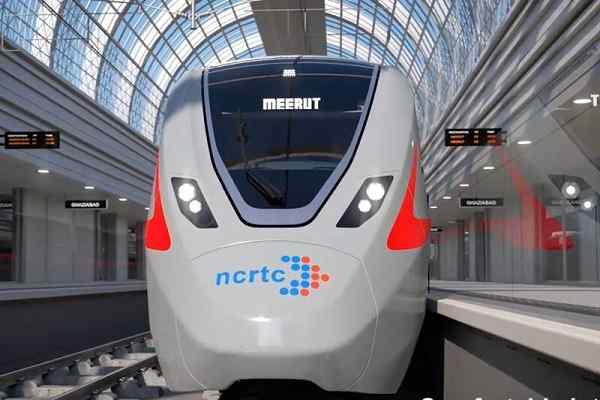
Regional Rapid Transit System (RRTS) is a mega infrastructure project that is set to transform the way people adopt public transport and travel across the National Capital Region. It will provide seamless connectivity across the key-urban nodes of NCR via a high-speed regional rail network.
Delhi-Ghaziabad-Meerut RRTS corridor, which is the first among eight corridors envisaged in NCR, passes through thickly populated areas of Ghaziabad, Muradnagar and Modinagar where the major portion of the alignment is along the median of Delhi-Meerut Road (erstwhile NH-58). The alignment also passes through the densely populated and congested areas of areas of Delhi and Meerut.
Decongestion of the National Capital, reducing vehicular traffic on the roads, significant long-term reduction in air-pollution, and balanced regional development are some of the key outcomes of RRTS implementation in NCR. One of the new-age techniques being used by NCRTC for the project implementation is extensive pre-casting of various components of civil structures and high-performance track. Pre-casting has helped us in safe and fast execution of the works while ensuring good quality control, minimizing inconvenience to the road users, local passer-by, business owners and residents along the entire stretch, and reduction in air pollution & noise pollution.
Pre-casting, although not a new terminology in civil infrastructure projects, has been used not only extensively but in an innovative manner for this project with some of the structures being pre- casted first time in the country for such large-scale complex project.
Unlike the conventional on-site construction which requires mobilization of huge quantities of 3Ms (Materials, Machinery and Manpower) at site, pre-casting of various structural elements has significantly reduced the traffic chaos, public inconvenience, and environmental issues at site.
Even where onsite construction is inevitable, mostly foundations, after securing the site with high strength prefabricated barricades, foundation work for both station and viaduct is executed by using state-of-the-art piling rig machines, high capacity cranes, remote controlled boom placers, ready-made steel formwork with high strength and precision, pre-tied steel reinforcement cages, advanced concrete batching plants. Such technology reduces the construction time significantly and results into high-end precision of casting, good aesthetics, negligible defects, safe working environment at site. It also reduces the duration of site occupancy and barricades are removed from the roads in a timely manner.
Precast structural elements which are to be placed above foundations are casted on 24 x 7 basis in precast yards. This process runs parallel to on-site construction which reduces overall project duration significantly. This technique proved to be a game changer in taking up of construction work during the pandemic (Covid-19) period. Pre-cast yard being a more controlled site, it is easier to train manpower, monitor and implement COVID-19 related norms amongst the labor. Accordingly, large number of laborers were engaged at precast yards during this period and maximum output was achieved which enabled full pace erection once the situation improved and work started in full swing at sites.
More than 70 to 80% of the structural elements are being pre-casted and erected with Auto Launching Gantries (Tarinis) and advanced high-capacity cranes for viaduct and stations. Pre-cast Box girder segments, OHE parapets, I-Girders, portal U-shells, track slabs etc. are enabling fast construction of viaduct. Similarly, Pre-cast primary & secondary beams, Pier arms etc. are adding pace to the station construction. Even ancillary works like RCC drain, Water harvesting pits etc. have been designed as pre-cast to ensure quality and save time during construction.
However, handling of such a huge quantum of the pre-cast elements is not an easy task. To cater these elements along the entire stretch of 82 kms, presently 10 state-of-the--art precast yards with total area of approximately 80 ha and equipped with high-capacity bay gantries (100 MT) & cranes, reinforcement cutting and bending machines, automatic batching plants are operating. These yards are also equipped with PTZ CCTV cameras and each activity is critically being monitored.
Pre-casting on one hand is adding pace to the construction, and on the other side it is adding value to the project through following means:
- Using pre-cast techniques require site barricading for minimum duration and hence helps minimize disturbance to existing vehicular traffic and local public. Pre-cast elements are transported and erected during lean traffic hours i.e. mostly during night time.
- Better planning and resource optimization can be achieved as casting take place in controlled factory like environment where time-cycle of each activity is fine tuned to get maximum output in minimum time, along with ensuring high quality. Such optimization results in maximum grade of concrete with minimum resources and leads to lesser concrete production cost, avoids wastage of natural resources like aggregates, cement, water etc. Use of minimum curing water and its recycling through collection pits, use of curing compounds in various elements, gardening and concreting of the landscape are the measures which popularizes the benefits of precast yard and makes it environment friendly.
- Precast yards are equipped with most advanced setup for concrete production which includes automatic handling of raw materials with precise weighing facility, temperature and TDS controlled water inflow. Admixtures which enable better control on concrete quality and its properties are precisely added directly through batching plant.
- As pre-casting is done for elements which are required in considerably large numbers and are repetitive in nature, mould/shutters are fabricated with high precision and finish leading to defectless and aesthetically beautiful structures. Such repetition also enables high labor output and require lesser supervisory staff as labor get trained for similar works. Pre-casting enables enhanced quality control as it is easier to conduct pre and post concrete checks and better supervision during concreting. Any adverse issue if observed can be handled promptly without any impact on scheduled construction. Such precast elements are match casted to avoid any mismatch at site and are uniquely numbered.
Despite two waves of Covid 19 pandemic, NCRTC has been able to keep the pace of construction on schedule. Presently the 20th Launching Gantries (Tarini) has been deployed to ensure rapid progress on the entire Delhi-Ghaziabad-Meerut RRTS corridor.
This article is first appears on Pulse.





